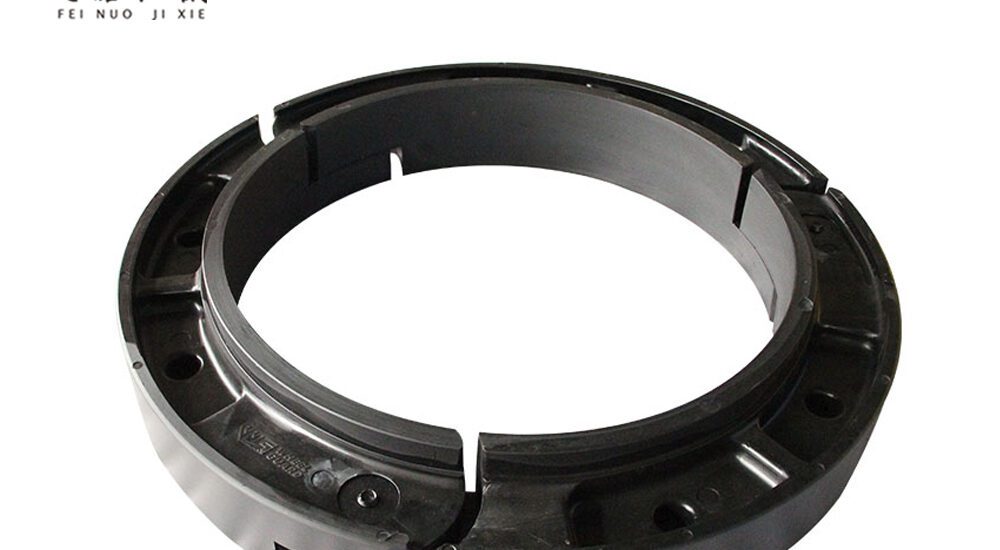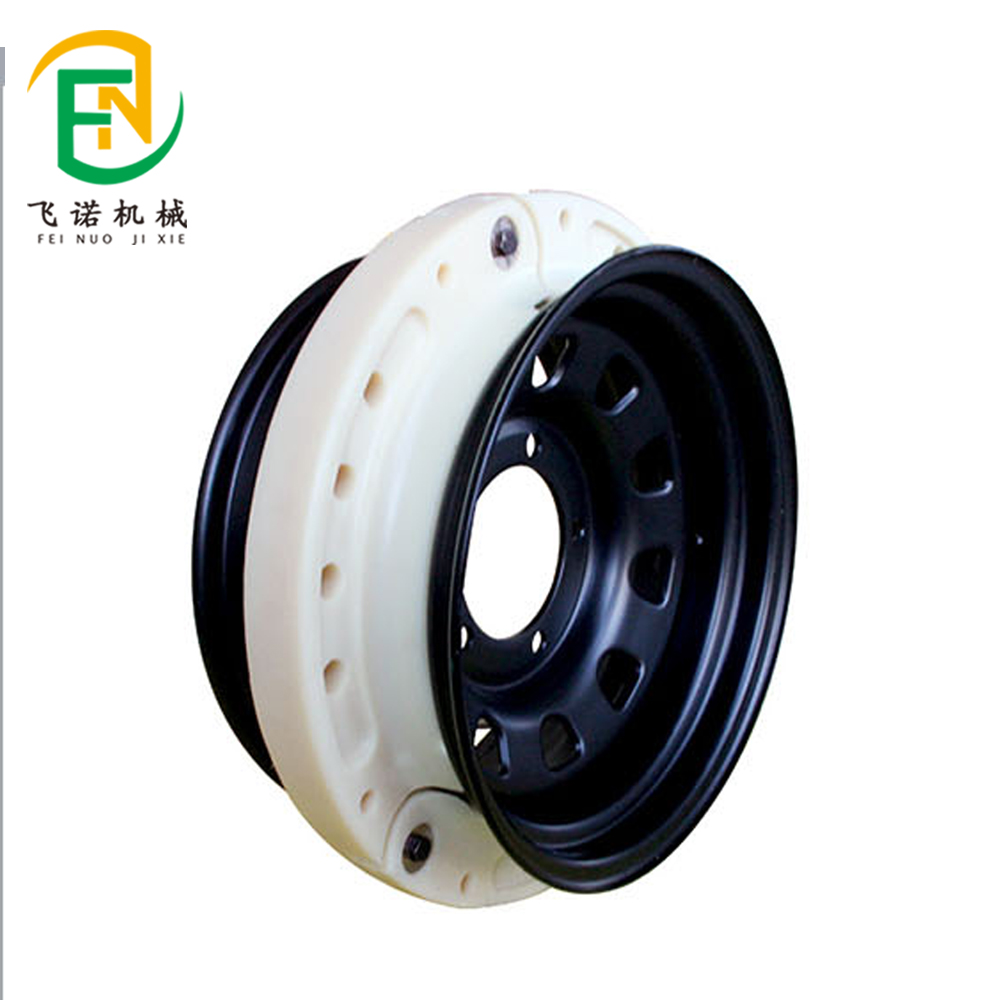- May 16, 2025
- Posted by: feinuojixie
- Category: Injection Molding News


Off-roading is about venturing into the wild—unpredictable, untamed, and often unforgiving. Whether you’re crawling over boulders, slicing through sand, or navigating dense forest trails, one thing remains certain: your tires will be pushed to their limits. While most off-road enthusiasts focus on suspension upgrades, winches, and traction aids, one of the most critical components often goes unnoticed—tire survival. A flat tire in a remote area can quickly turn a thrilling trip into a logistical nightmare.
That’s where run flat insert comes in. Designed to support your vehicle even when the tire loses all pressure, these inner supports act as a silent guardian against punctures, sharp rocks, and blowouts. They allow you to keep moving—safely and confidently—until you can reach a proper repair station. For any serious off-roader, run flat insert isn’t just a luxury; it’s a necessity that could be the difference between a smooth ride home and being stranded in the wilderness.


What Are Run Flat Inserts and How Do They Work?
Run flat insert is a specialized component placed inside a tire to provide structural support in the event of air loss. Unlike traditional run flat tires—which rely on reinforced sidewalls—run flat insert sits directly within the inner cavity of the tire, creating a physical buffer between the wheel and the ground. When a puncture or blowout occurs, the insert supports the vehicle’s weight, allowing it to continue driving at reduced speeds for a limited distance.
Made from durable, heat-resistant polymers or composites, run flat insert is engineered to absorb impact and resist deformation. The result is a tire that can function even under zero pressure, buying the driver time to safely exit the trail or reach a repair point. Its simplicity and effectiveness have made it popular not only in military and commercial vehicles but increasingly in off-road recreational vehicles as well.
Why Standard Tires Aren’t Enough Off the Beaten Path
While standard off-road tires are tough, they’re not invincible. Trails lined with sharp rocks, thorn bushes, hidden debris, or deep ruts can cause sidewall cuts, punctures, and complete tire failures. In these conditions, even the best mud-terrain or all-terrain tire can be compromised in seconds.
Worse still, most off-roaders operate in remote areas where roadside assistance isn’t an option. A simple flat tire can mean hours of delay or a risky trek back to civilization. Standard tires, even with reinforced walls, offer little support once deflated. Without a backup plan, such failures can put both the vehicle and its occupants at risk.
This is where the run flat insert proves its worth. It bridges the gap between tire deflation and vehicle immobility, giving drivers the confidence to tackle aggressive terrain without fear of being stranded.
The Advantages of Run Flat Insert for Off-Roading
The benefits of using run flat insert during off-road travel are substantial:
-
Uninterrupted Mobility: When a tire loses air, the insert supports the load, allowing the vehicle to continue moving without compromising stability.
-
Enhanced Safety: No need to perform risky tire changes in dangerous or uneven terrain.
-
Reduced Downtime: Drivers can reach a safer location for repairs rather than being stuck mid-trail.
-
Wheel and Suspension Protection: The insert cushions the rim from impact, helping avoid costly wheel and undercarriage damage.
-
Peace of Mind: Simply knowing that a tire failure won’t end your trip offers tremendous psychological relief on demanding trails.
These advantages make run flat insert one of the most impactful upgrades for off-road reliability.
Real-World Scenarios: When Run Flat Insert Saves the Day
Picture a solo overlander crossing a remote desert trail. Miles from the nearest road, one tire hits a jagged rock and deflates instantly. Without run flat insert, the driver would be stuck, possibly needing to change the tire in scorching heat and shifting sand. With the insert, however, the vehicle keeps moving, reaching a shaded rest area before addressing the issue.
Or consider a weekend trip through dense forest. A nail lodged into the tread causes slow deflation. Instead of abandoning the route, the run flat insert allows the group to finish the loop and exit safely.
From harsh mountain switchbacks to swampy lowlands, run flat insert provides a safety net that transforms dangerous setbacks into manageable situations.
Choosing the Right Run Flat Insert for Your Vehicle
Selecting the correct run flat insert involves more than just tire size. Key considerations include:
-
Terrain Type: Rocky, sandy, or muddy environments place different stresses on tires.
-
Vehicle Load: Heavier vehicles require inserts with higher load-bearing capacity.
-
Driving Style: Aggressive drivers may need reinforced materials to handle increased strain.
-
Tire and Rim Compatibility: Not all inserts fit all wheels—always confirm fitment specifications.
-
Reusability and Maintenance: Some inserts are designed for single use, others for multiple cycles.
Consulting with an off-road equipment specialist or manufacturer can ensure you get the most effective insert for your setup.
Installation Tips: Getting the Most Out of Run Flat Insert
Installing a run flat insert is not a typical DIY job, though some experienced users can manage it. The process involves unseating the tire bead, placing the insert inside, and re-inflating with precision. Improper alignment or incorrect pressure can reduce performance or cause premature wear.
Best practices include:
-
Using a certified technician with experience in off-road tire systems.
-
Balancing the tire after installation to prevent vibration.
-
Checking for fitment issues before heading off-road.
-
Carrying a backup air source (like a compressor) to maintain proper tire pressure around the insert.
With correct installation, run flat insert can perform flawlessly under intense conditions.


Maintenance and Inspection for Long-Term Performance
Run flat insert, while durable, still requires occasional attention. After every serious off-road outing:
-
Inspect the Insert: Remove the tire (if necessary) and check for cracks, deformation, or wear.
-
Check Tire Wear: Uneven patterns may indicate improper fit or internal damage.
-
Look for Heat Marks: Excessive heat buildup can reduce insert effectiveness.
-
Clean and Re-seat: In dusty or muddy conditions, cleaning helps extend service life.
Manufacturers often provide guidelines on inspection intervals and replacement schedules. Treat run flat insert as an investment—regular maintenance ensures it’s ready when needed most.
Are Run Flat Insert Worth the Investment?
At first glance, run flat insert may seem costly, especially when adding installation fees. But factor in the alternative: the cost of towing a stranded vehicle, the risk of injury during trailside repairs, or damage to your wheels and suspension.
For off-roaders who frequent remote locations, the value becomes clear. A single save in a critical moment can offset the entire expense. In many cases, a run flat insert pays for itself the first time it’s needed.
Think of it not as a convenience, but as a core safety system—like a winch or roll cage—designed to keep you going when nature throws its worst your way.
Confidence on Every Trail with Run Flat Insert
Off-road driving is as much about preparation as it is about adventure. The trails may be unpredictable, but your equipment doesn’t have to be. With run flat insert installed, you gain more than just extended mobility—you gain freedom, confidence, and peace of mind.
No more worrying about tire punctures derailing your plans. No more risky trailside repairs in the dark. Run flat insert empowers every off-roader to go further, climb higher, and explore deeper—safely.
So before your next expedition, ask yourself: are your tires truly trail-ready? With run flat insert, the answer can finally be yes.
